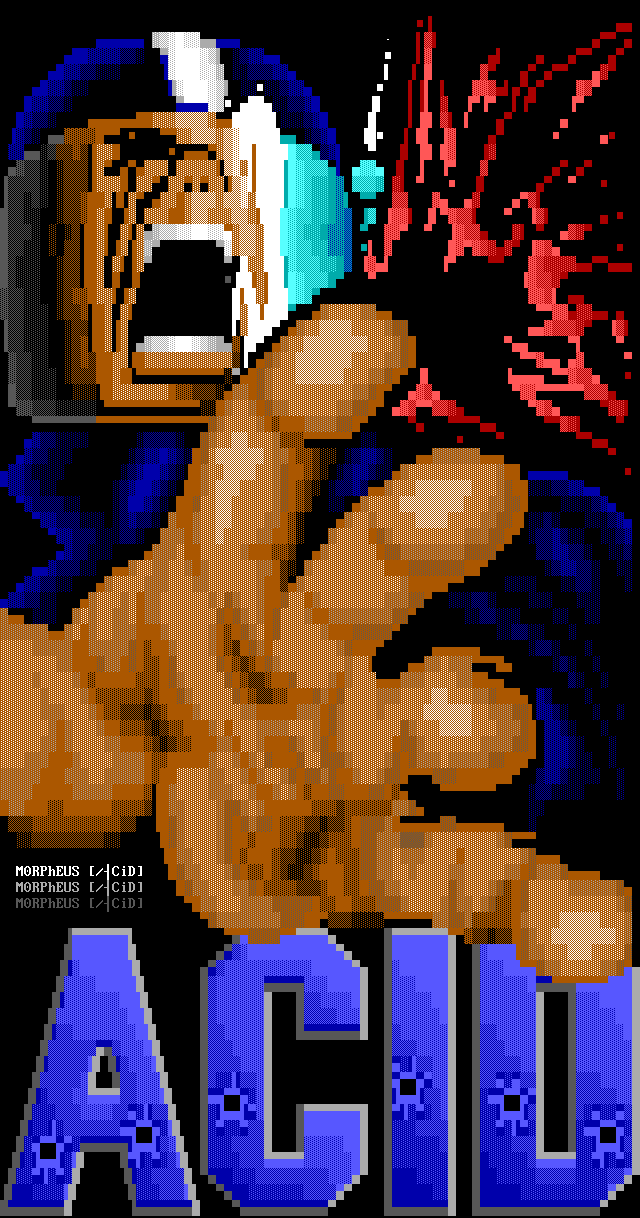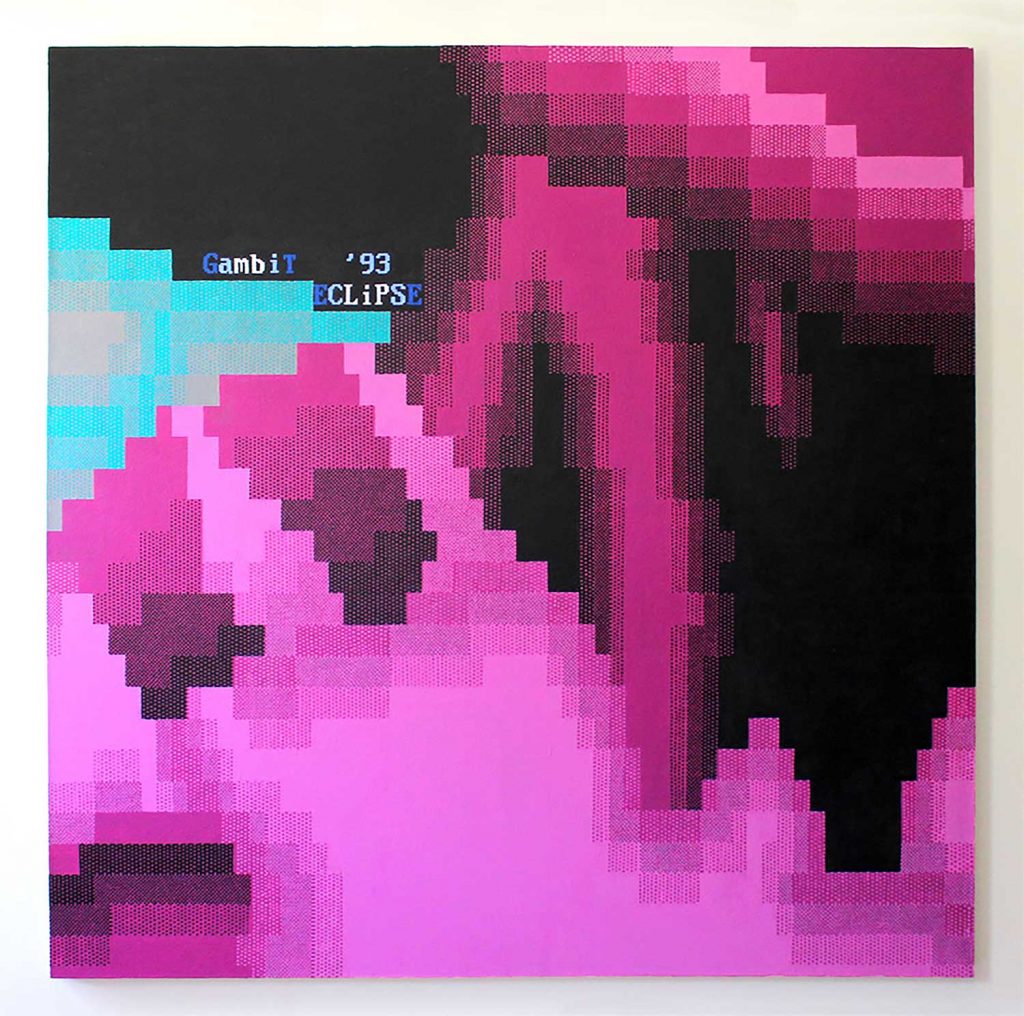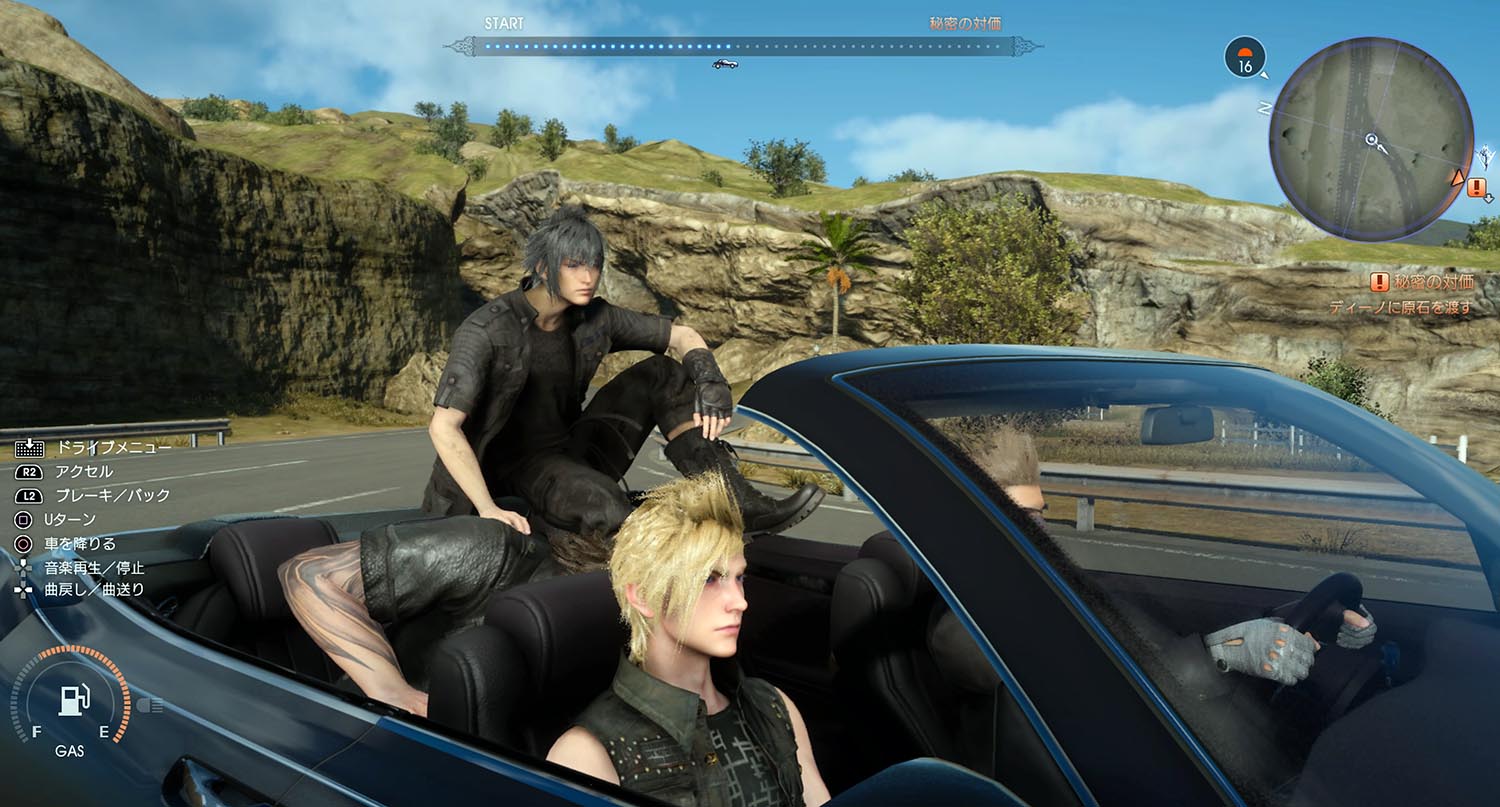Game State is a column by artist Oliver Payne covering the mechanics, aesthetics and ideas of video games.
In this new video, artists Oliver Payne and Kevin Bouton-Scott examine the history and aesthetics of ANSI art. A largely forgotten chapter in the history of the Internet and computer art from the late 80s and early 90s, ANSIs were created out of a limited set of characters, symbols and colors, combined in complex and stylistically diverse ways. Artists typically joined crews competing for supremacy in the ANSI scene, swapping art packs over Bulletin Board Systems (BBSes). The work can be hilarious, fascinating, and dazzling, while there is something exotic about artist operating within such tight constraints and finding there increasingly baroque modes of expression. The history of ANSI connects in numerous ways with the social and technological histories of the period. Senior Editor Eli Diner recently spoke with Kevin Bouton-Scott about his own experiences growing up in the ANSI scene.
Eli Diner: Kevin, why don’t you start by telling us a bit about your experiences in the ANSI scene. How did you come to be involved in this world? Where were you living? How old were you? Was ANSI art in full bloom by the time you got involved or were you there at the beginning?
Kevin Bouton-Scott: I was active in the ANSI scene from about age 13 to 15. It would have been sometime in 1993 that I first experimented with making ANSIs. The scene would have been very established by the point I became a part of it, with hundreds of groups having already put out art packs. I had built my first computer with my older cousin who was a programmer in Silicon Valley, and Egghead Software carried a free magazine called the Bay Area Bulletin Board Advisory which had phone numbers for local BBSes to call. One board listed in there was run by this guy, the Raven, the only BBS user I ever actually met in real life. He was in his late teens with a mustache, Iron Maiden shirt, and a red beret. He came to my mom’s house and helped me set up my own BBS when I was 13. His BBS was where I first learned the ropes of the BBS world. It wasn’t an elite board: it had a teenage stoner Dungeons and Dragons fantasy metal vibe to it. There were likely some anarchist cookbook fanfic bomb-making text files and things like that. He had a few iCE and ACiD art packs there, and seeing those graphics blew me away and I was able to gather BBS phone numbers to call from the ANSIs in those packs. I had kind of flunked out of school and got in trouble early on in my freshman year, so my computer and the ANSI scene became a weird little therapeutic world I was able to escape to for a bit when my life went through a rough patch. The kids into ANSI were really smart, funny, and friendly from what I remember. The underground BBS cultures had really strict rules of conduct about no ‘flaming’, which would be that era’s computer slang for fighting or slander, shit-talking, trolling, ‘clout-chasing’—the things that drive everyone crazy on the internet now, with major news outlets reporting on tweets.

I didn’t know anyone else my age with a computer yet, but more tech people began moving to Niles in the early ’90s. I had an older ex-hacker/pool hustler living next door that my mom and I would build haunted houses with at the elementary school every year, and he hipped me to books like the Cuckoos Egg and general computer underground stuff as well. I played Magic: The Gathering with people that had computer jobs as well. Old Deadheads with ZZ Top beards from around the corner were becoming overnight multimillionaires with the stock options with the basic coding they’d learned in a community college classes. It was a really wild time and place to grow up.

ED: What ANSI crew/s were you affiliated with? Did you have distinct style or type of imagery that you specialized in?
KBS: After my local group folded, I landed in iCE, which stood for Insane Creators Enterprise. iCE was one of the big two groups in North America. The ACiD vs. iCE rivalry was huge. The day I got in iCE, the leader of ACiD tracked down the phone number at my mom’s house and started calling me regularly trying to get me to leave iCE for ACiD. I was what was referred to as a font artist or logo artist, which basically meant I only did lettering. iCE had Pnakotic and MCA who we show in the film, who I thought were the best font artists, so I wanted to be in iCE even though ACiD was probably the dominant group at that moment. I hardly drew any pictures at all and wasn’t really into comic books aside from the box full of over-printed #1’s every boy seemed to have acquired in 1990 that are all now worth a dollar on eBay instead of the fabled college tuition. It was common to have collaborative ANSIs, so a lot of what I did in iCE would be logos at the bottom of other guys’ comic book pictures. I was really obsessed with graffiti at this point in my life, so ANSI was mostly a way to practice drawing and coloring in lettering before I was able to do it competently with spray paint. In turn, I think the ANSIs actually helped me construct lettering from a slightly different logic set than the other people in the graffiti subculture in the years to come.
ED: The wealth of ANSI examples is totally mind-boggling and one of the real joys of the movie. Where did the material come from? Was this all stuff you had archived?
KBS: I have 18,000 .ans files on my computer right now that I went through for this project. I’ve become quite obsessed with this stuff again. A month before we started this project I had just gotten out of the ArtCenter master’s program where I focused primarily on paintings dealing with subcultural histories and technological shifts. My final show was about fan art, so diving back into the ANSI scene fit right in with all this and gave me a huge amount of content to sort through with my new brain. I’ve always kept ANSIs in my life, but I’m not th one who archived these ANSIs initially. To my understanding, in the early 2000s this guy named Jason Scott, who is a prominent part of the entire internet archive movement, went out of his way to save whatever was left of BBS culture. I was told he hooked up with RaD MaN, the leader of ACiD, who was likely the person responsible for the ANSI scene growing to the size it did. I think RaD MaN got ahold of whatever ANSI-related BBS hard drives still remained, or maybe it was just his own hard drive, and the two of them created a database of the remaining art packs. But I went out of my way to include some ANSIs that I don’t think are in those archives, which I found in some unrelated .zip files from the early 1990s, a few of which I’m quite excited about.
A lot of the more novice civilian ANSIs are actually the fun ones to look at now, as the ANSI scene became so trend-oriented and repetitive. Not unlike contemporary art, you see the same ideas over and over and only other members of the subculture are close enough that they can decipher—or care about—the minor nuances or insider references. The Public Domain ANSIs and the early stuff from ‘90-91 tended to have a more general, pragmatic function. They incorporated a lot of video game style graphics and general 80’s stock computer aesthetics and have more of a focus on overall theme or concept and less emphasis on all the super technical shading methods which dominated the later years. I think they’re generally more interesting to look at now on an individual basis, because again, just like just in contemporary art, the really heavy thematic, genre-oriented works you end up evaluating less on their individual characteristics or merits and more as an armchair sociologist trying to analyze the conditions of the trend itself.

ED: One of the things that is really fascinating is the way the film conveys a kind of evolution of the genre, as you delineate the emergence of different style and techniques as well the critical discourse that accompanied the back-and-forth exchange of ANSI’s. Could you give a sense of what that was like from a on-the-ground perspective? Was there a sense that techniques were changing rapidly?
KBS: The long scrollers appropriated directly from Image and Valiant comic books were the dominant form of art in the packs by that time I got into it. In turn, this orthodoxy created a resistance of sorts, and a lot of far-out moves in the opposite direction were emerging simultaneously. This all could be found side by side in the same art pack for the same group though. I don’t remember ideological rivalries growing along with the style shifts; everyone just loved ANSIs and wanted to see what they could do next. pHUNK and some of these movements that stepped away from comic book illustration were the most attractive to me personally. I was into absurdity or things I perceived to be new or weird or experimental much more than I cared about any notion of mastery. It was always very evident who the stars were at any given moment and who had just made the best new ANSIs. Most art packs were released on the first of the month, so within a few days the electronic magazines would be reviewing them all and displaying all the best new ANSIs that had just come out. Lord Jazz, Somms, these guys in ACiD were like gods in the ANSI scene when I got into it, and 90% of the kids were attempting to emulate their work. This is a similar ratio to any creative subculture I was ever a part of, but I think the fact that the ANSI scene occurred so anonymously, with no real identity attached beyond a code name, and the degree of difficulty to even access the subculture, made for a pretty diverse pool of interests. You get the entire gamut of teenage rave, skate, grunge, hip hop, gangster, goth, anime, metal, fantasy, industrial, and animation iconography from the era going on within the same art packs simultaneously. This, in the early 90s, a period prior to the ‘hipster’ generation’s subcultural ‘flattening’ or whatever we want to call it.
Most of all though, it was just very, very exciting, suspenseful and ominous. Computers were still such mysterious machines, so when these graphics would scroll down the screen for the first time, it was totally fantastic. Tons of wild freaked-out energy, and obsessed kids spending all day all night making this stuff, reviewing it, writing about it, interviewing their favorites, uploading them, committing crimes and being arrested just to participate and contribute to something they enjoyed that no one else around them understood at all. There was just no way to casually be into it, they took too long to make, and a casual person would likely never even be given access to an elite BBS. Groups were releasing art packs almost daily, people were calling the computer in my bedroom from all 50 states and Canada every day all day, and breaking the law stealing long distance calls to do so. It was great.

KBS: While the web obviously has a lowest-common-denominator thing going on compared to the super nerd-centric BBS days of computing, in a weird way I’ve watched everyone, society as a whole, slowly become much more like the super strange computer culture I stumbled into back then. And at the same time, using a computer now has become more and more like what I would have been using a computer back then to escape from, if that makes sense. I guess this may be the case with everything I was ever into. I am fairly certain that things like early 4chan culture, the dark web, Anonymous, the Columbine trench coat dudes, and a lot of these really well known things were direct descendants of the h/p/a/c cultures that the ANSI scene ran parallel to. I’m really not sure what became of a lot of the ANSI scene after I lost touch. I came across something last year where that Cory Archangel group BEIGE [Programming Ensemble] shouted out the ANSI heads. Perhaps some of that generation of artists are byproducts of the ANSI scene. Through releasing this film I’m hoping we will be able to connect some of those of dots, if they exist. In terms of ANSI now, the scene is still around in a very small-scale underground way. There are still art packs being released. Old groups like MiST, and modern-day groups like Blocktronics have kept bringing new energy and made some of the most impressive pixel graphics imaginable.
What’s weirdest is when I watch documentaries about the internet’s history and people make statements about AOL inventing this thing called a chat room. My mom went to a high school reunion in 1981 and one of her classmates had racked up a bill of hundreds of dollars for chatting on a dating BBS. I’ve seen statistics that there were over 15,000.000 BBS users in the US in 1994, and over 60,000 Bulletin Board Systems up at one time. For whatever reason, computer historians tend to jump from the ARPAnet and computer science departments at Carnegie Melon, MIT, and Stanford in the 70s straight through a time portal to Windows 95. BBSes would have been the main location teenagers, kids, and members of the general public formed the first online communities that most closely resemble what we all do today. They say the gay BBS community disseminated AIDS information across the country, so when we hear about the Dallas Buyers Club era medication networks and this sort of thing, it was likely all happening through BBSes. It’s a really giant lost history that the ANSI scene is just a tiny slice of. Total erasure is still occurring with the internet, of course, even something as recent as Myspace has now completely vanished. This was literally the first time in modern history where democratic, user-generated content was able to shape a mainstream social reality. Did anyone bother to store it?

